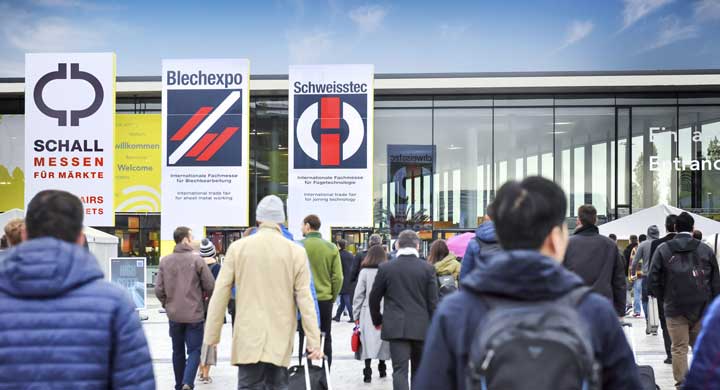Product novelty 27. September 2023
New generation of protective films for fibre laser processing significantly increases productivity
1 / 3

Up to 20 percent faster cutting speeds using a fibre laser are possible
2 / 3

Optimal adhesion without bubbling even with complex cutting geometries and patterns
3 / 3

Both PF84 CS and PF82 CS deliver maximum productivity and efficiency when using a fibre laser
POLIFILM PROTECTION is unveiling a new generation of protective films designed for fibre lasers processing. These process optimized solutions, thanks to their ideal film properties and adhesive characteristics, contributes to substantial improvements in productivity and quality. Additionally, they make a valuable contribution to reducing environmental and climate impact.
Special additives have been used to perfectly tailor these new protective films to the wavelength of fibre lasers, giving them a 100 percent absorption capacity. As a result, the laser beam's energy is completely converted into melting heat. Even at maximum cutting speeds, clean, burr-free cutting edges are achieved, providing ideal components for subsequent processes. The cutting process is increased by up to 20 percent.
Furthermore, this new generation of protective films, thanks to their soft and optimally adhering adhesive formulations, prevent bubble formation at the critical moment of initial piercing. This eliminates the need for preventive pre-piercing which users employ to prevent bubble formation, process interruptions, and higher rejection rates. Depending on the applied methods and machinery, production speeds are increased an average of up to 35 percent.
The result: significantly higher productivity. Typically, in a normal two shift operations, the use of these new protective films can save more than €100,000 per year due to reduced energy consumption and lower labour costs. Moreover, rejection rates decrease and the need for further processing is eliminated. Finally, the protective film easily accommodates additional processing steps such as edge forming, bending, or punching and can be quickly and easily removed without leaving any residue.
Ultimately, the new generation of protective films support companies in achieving their sustainability goals as reduced rejection rates mean less wastage of natural resources and because energy is used more efficiently, the carbo
Special additives have been used to perfectly tailor these new protective films to the wavelength of fibre lasers, giving them a 100 percent absorption capacity. As a result, the laser beam's energy is completely converted into melting heat. Even at maximum cutting speeds, clean, burr-free cutting edges are achieved, providing ideal components for subsequent processes. The cutting process is increased by up to 20 percent.
Furthermore, this new generation of protective films, thanks to their soft and optimally adhering adhesive formulations, prevent bubble formation at the critical moment of initial piercing. This eliminates the need for preventive pre-piercing which users employ to prevent bubble formation, process interruptions, and higher rejection rates. Depending on the applied methods and machinery, production speeds are increased an average of up to 35 percent.
The result: significantly higher productivity. Typically, in a normal two shift operations, the use of these new protective films can save more than €100,000 per year due to reduced energy consumption and lower labour costs. Moreover, rejection rates decrease and the need for further processing is eliminated. Finally, the protective film easily accommodates additional processing steps such as edge forming, bending, or punching and can be quickly and easily removed without leaving any residue.
Ultimately, the new generation of protective films support companies in achieving their sustainability goals as reduced rejection rates mean less wastage of natural resources and because energy is used more efficiently, the carbo

